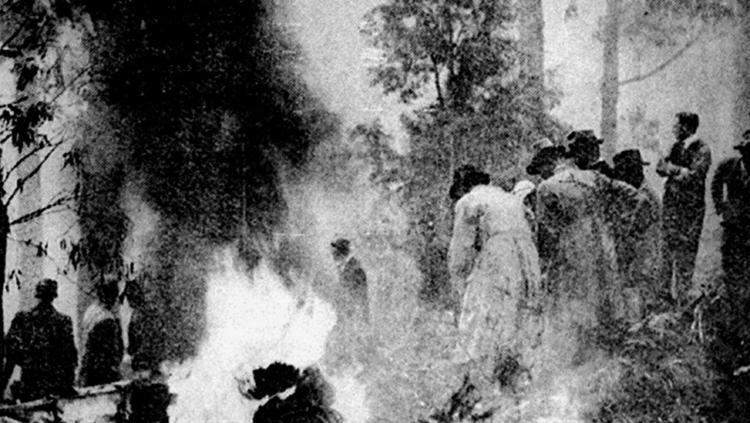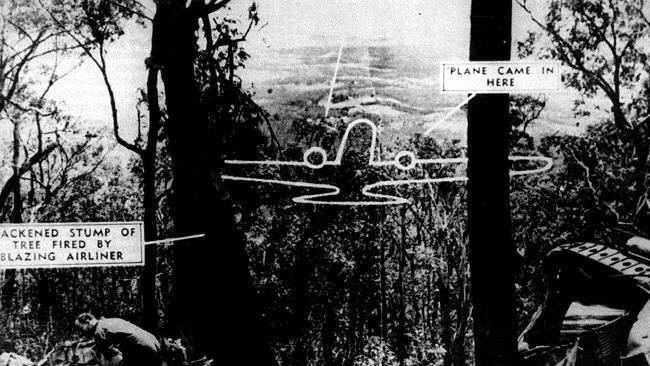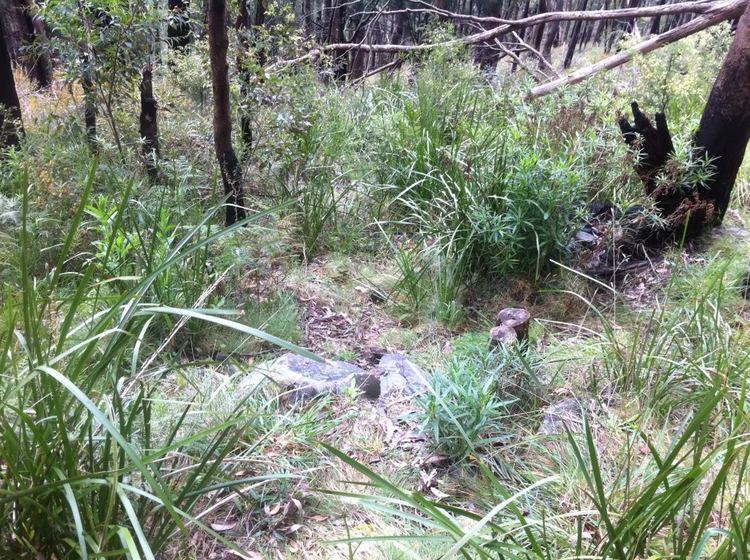Passengers 14 Survivors 0 Date 25 October 1938 Survivor 0 Crew count 4 | Injuries (non-fatal) 0 Total fatalities 18 (all) Passenger count 14 | |
 | ||
Summary Poor visibility, pilot error Similar Northwest Airlines Flight 2, Edmonton air crash, 1938 Yosemite TWA crash, Kweilin incident, Samoan Clipper | ||
The Kyeema airline crash took place on 25 October 1938 when the Australian National Airways Douglas DC-2 Kyeema, tail number VH-UYC, flying from Adelaide to Melbourne, commenced final approach to Essendon Airport through heavy fog and crashed into the western slopes of Mount Dandenong, also known as Mount Corhanwarrabul, killing all 18 on board instantly.
Contents
Crash summary

The flight took off from Adelaide at 11:22. As it entered the area around Melbourne, it came across a heavy cloud layer, extending from 1500 feet (457 m) to 400 feet (122 m) and making landmark navigation difficult. As a result, the flight crew mistakenly identified Sunbury as Daylesford through a gap in the clouds, leading them to believe that they were 30 kilometres (19 miles) behind where they actually were on their flight plan.

Had the flight crew cross-referenced their ground speed with previous landmarks, they would likely have realised that they were not where they thought they were. Instead, they overshot Essendon and, unable to see through the heavy fog, crashed into Mount Dandenong a few hundred metres from the summit.

Exactly what happened in the last few minutes before the crash is disputed. There are claims that the pilots may have seen the mountain coming and tried to turn the aircraft away, inadvertently making the situation worse by adjusting from a flight path through a gap between two peaks to a path directly into one of them.

There is also strong evidence that the pilots were becoming unsure of their position. According to Macarthur Job's book, Disaster in the Dandenongs, the radio operator had requested the controller at Essendon give them a radio bearing. Essendon had acknowledged and told them to leave their transmitter on, but the signal stopped and no further contact was made. It is thought that this is the moment that Kyeema hit the mountain.
Passengers and crew

There were 18 people on board the DC-2: 14 passengers, the captain, the first officer, an air hostess, and a cadet pilot who operated the radio during the flight.
Among the passengers was Australian Member of Parliament, Charles Hawker; three leading wine makers from South Australia, Hugo Gramp, Tom Hardy and Sidney Hill Smith; several barristers; and a young couple on their honeymoon.
Aftermath
By public demand a Royal Commission into the cause of the disaster was established, and the Australian Federal Government appointed an Air Accident Investigation Committee under the Chairmanship of Colonel T. Murdoch DSO, VCE with the public enquiry commencing on 30 October 1938. Because of the crash, regulations were passed which require flight checking officers to monitor the flights of aeroplanes and advise on such things as position, weather, and alternate landing options. Also implementation of a 33 MHz radio range system was recommended to provide pilots with accurate information on their course.
It was not until 40 years after the crash that a memorial to the Kyeema and its eighteen passengers was created at the crash site.
Cause
Records indicate the radio operator requested radio bearing to which Essendon asked the radio operator to leave transmitter on. The flight did not and the signal faded.
